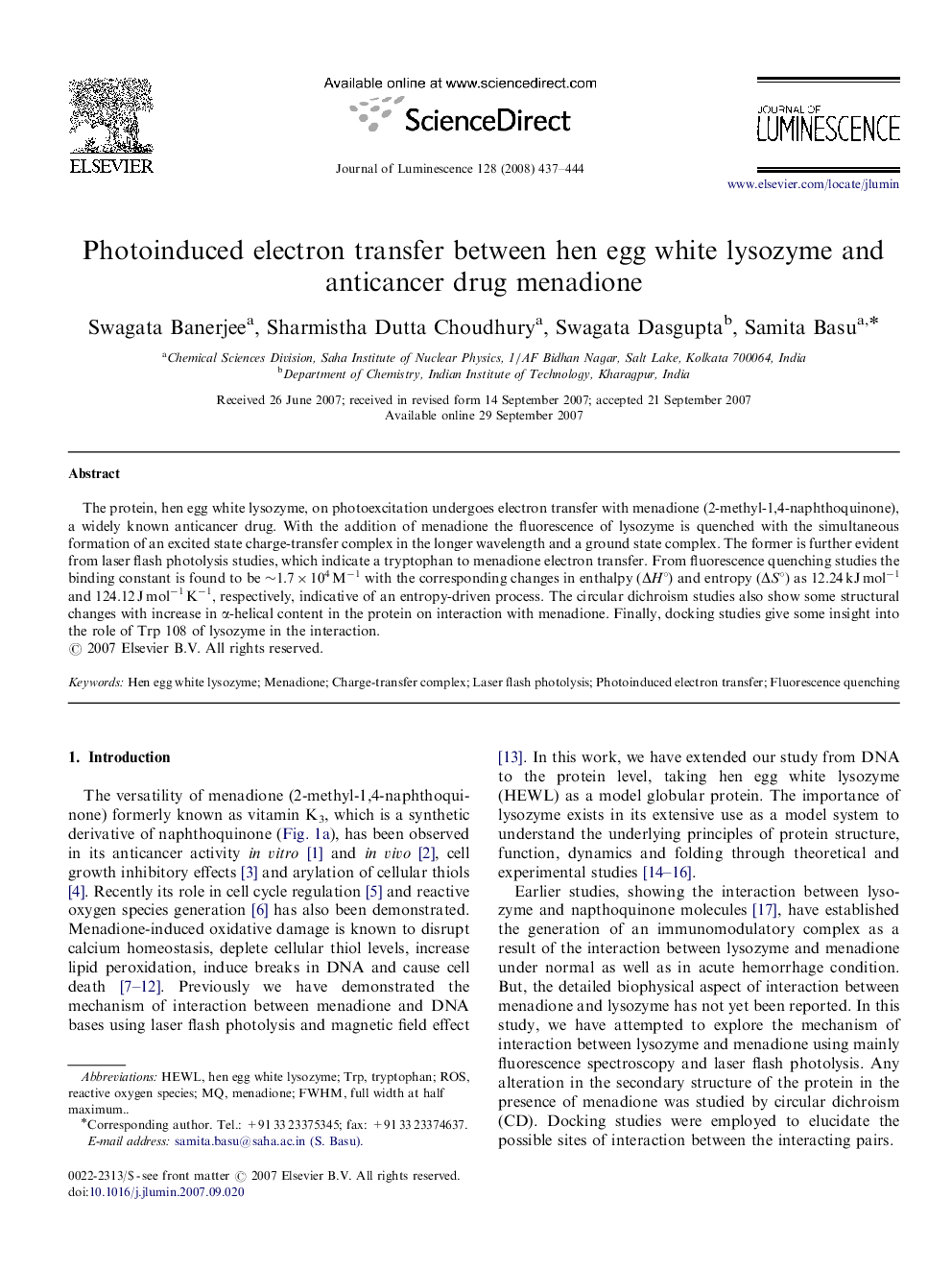| Article ID | Journal | Published Year | Pages | File Type |
|---|---|---|---|---|
| 5403809 | Journal of Luminescence | 2008 | 8 Pages |
Abstract
The protein, hen egg white lysozyme, on photoexcitation undergoes electron transfer with menadione (2-methyl-1,4-naphthoquinone), a widely known anticancer drug. With the addition of menadione the fluorescence of lysozyme is quenched with the simultaneous formation of an excited state charge-transfer complex in the longer wavelength and a ground state complex. The former is further evident from laser flash photolysis studies, which indicate a tryptophan to menadione electron transfer. From fluorescence quenching studies the binding constant is found to be â¼1.7Ã104 Mâ1 with the corresponding changes in enthalpy (ÎH°) and entropy (ÎS°) as 12.24 kJ molâ1 and 124.12 J molâ1 Kâ1, respectively, indicative of an entropy-driven process. The circular dichroism studies also show some structural changes with increase in α-helical content in the protein on interaction with menadione. Finally, docking studies give some insight into the role of Trp 108 of lysozyme in the interaction.
Keywords
Related Topics
Physical Sciences and Engineering
Chemistry
Physical and Theoretical Chemistry
Authors
Swagata Banerjee, Sharmistha Dutta Choudhury, Swagata Dasgupta, Samita Basu,
